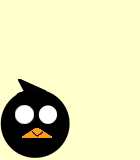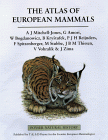
PICK OF THE GERMAN WEEK 2000
The Red Kite Milvus milvus 
German Bird of the Year 2000

PICK OF THE GERMAN WEEK 2000
The Red Kite Milvus milvus 
German Bird of the Year 2000
PICK OF THE GERMAN WEEK 03/2000
News from the GermanBirdNet
http://www.birdnet.de
and other sources...
ENVIRONMENT I
WHITE-TAILED EAGLE PLUGGED FULL OF LEAD
A 'leaded' White-tailed Eagle has been found for the third time within 18 months in Brandenburg Province. The bird was found near Muencheberg, incapable of flight, by members of the 'AQUILA' club who brought the bird to the animal clinic of the Free University, Berlin. Sadly, in spite of expert care, it died within a short time. Both the clinical and pathological diagnoses of the veterinary surgeon Kerstin Mueller and Dr Oliver Krone of the Zoo and Wild Animal Research Institute, agreed on lead poisoning as the primary cause of death. This was not due to older lead shot found in its leg; but rather lead splinters in its stomach.
Two separate dangers become clear as a result of this case:
1. There are still people who shoot at raptors. In addition to several other species, Ospreys have often been shot and killed, or shot at, and the number of recorded cases appears to be on the increase.
2. 'Leaded' game (boar, deer and geese etc.,), as well as carrion containing lead shot, cause serious losses in White-tailed Eagle populations. This has been confirmed by various studies of the Golden and Bald Eagle. Current results of local studies here in Brandenburg (N. Kenntner, F. Tataruch & O. Krone) and other areas of Germany are due for publication and will be available soon.
The present case will, as usual, be submitted for prosecution and given press coverage.
ENVIRONMENT II
'COLLATERAL DAMAGE'* IN THE BRANDENBURGER LASER WAR
The current issue of 'Nature and Countryside' (Natur und Landschaft) contains an interesting reader's letter on the subject of the new Brandenburg Cormorant Ordinance which has been in force since the end of July 1999. This ordinance permits, in the period 16th August to 15th March, the shooting of Cormorants on those waters where damage to commercial fishing interests can be substantiated. The use of laser weapons to harass the birds in order to drive them away from such areas, is also permitted.
This latter point is taken up by a medical specialist and laser expert, Dr med. Florian Thienel, in a letter to the magazine. He points out that the damage caused to the birds by lasers is almost impossible to calculate, as the tolerances for the use of lasers in animal (mammal) experiments is still under trial and can hardly be applied to the completely different anatomy of the bird. The protective instinctive eyelid closure in other animals, and humans, would be ineffective with Cormorants as their eyelids are translucent and designed as an additional lens which concentrates light rays during the rest period. The risk of damage to human eyesight is also considerable. "The range, silence, ability to change direction within a split second and the irreducible danger of reflected rays from a smooth surface brings a very high risk of eye damage to man and other animals in our highly-populated or heavily frequented countryside. This can in no way be compared with the risks inherent in organised and controlled hunting."
He also makes the interesting point that the manufacturers also propagate the use of the laser gun against other bird species such as Lapwing, Grey Heron, Starling, Crows and Rooks, Wood Pigeons, Herring Gulls and Black-headed Gulls. Makes one wonder to where the numerous and destructive Lapwings can be driven off.
The risk of collateral damage has led to a study by the Department for Workplace Safety and Health in Thuringen which concluded that the use of the laser gun probably could well infringe workplace safety regulations.
Dr Thienel concludes: " As birds are dependent on a fully intact sight function to orientation in their surroundings, the search for food and finding their roost or nest, damage to their eyesight would inevitably lead to death from hunger in a very short time. As such weapons can the eyes of a group of roosting or perching birds in a matter of seconds the effect of uncontrolled use on whole populations can be irreparable and lead to local species extinction."
BIRD(S)OF THE WEEK
Little Gull flock in Bavaria --- Snowy Owl can now only be found in the newspaper reports --- Great Northern Loons still well represented
A FOX WENT OUT ON A CHILLY NIGHT…
For many of us, winter feeding means provision of frost-free food and titbits on the garden bird table or window feeder. We know that the extra energy source increases survival chances, especially in hard winters; but, even without human assistance, birds will go to great extents to eke out or supplement natural food sources. And not only birds…..
A Shelduck (Tadorna tadorna) was the first victim this winter in the Berlin Zoological Gardens of a city fox (Vulpes vulpes). "All that we found were his tracks in the snow and a few feathers" said zoologist spokesperson, Ragnar Kuehne. Amongst his responsibilities preventing Reynard and his like from depleting zoo stocks. But despite the setting of traps and regular nightly patrols, Ragnar has not yet had either of the pair of foxes, who regularly slip in from the neighbouring Tiergarten park, in the sights of his shotgun.
The recent plummeting temperatures, with their accompanying snow and ice, have increased the energy requirements of these relatively new city dwellers, and the increase in breeding figures in the green heart of the city this summer (despite – or because of the Love Parade?) have led to hunt for new food sources. What could be more appetising to a fox than the enticing smells from the Zoological Gardens, especially at dawn and dusk?
This is by no means a new phenomenon. The oldest zoo in Germany has witnessed the bloody predations of the foxes for a number of years. Although the more familiar European geese and ducks remain the traditional prey, 1997 was an unlucky year for 14 Flamingos (Phoenicopterus ruber).
Now the zoo staff are moving several dozen birds, including more exotic geese, the Black-necked Swan (Cygnus melanocorypha) and seabirds such as the Gannet (Sula bassana) into more secure quarters. This is not without its complications. These birds need open water and room to move around in and therefore spend winter normally out of doors. But "safety first" is Ragnar Kuehne's motto.
*'collateral damage' has just been voted non-word(s) of the year by German language experts
David Conlin
GermanBirdNet Berlin
David Conlin
Mobile: +49 172 394 6671
Ô-Ô Best of Europe
and POTGW Archives (under
construction)



 FOCALPOINT A family specialist business for scopes, bins and birding items - bestellen Sie auch direkt aus Deutschland! Gängige Kreditkarten telefonisch akzeptiert!
FOCALPOINT A family specialist business for scopes, bins and birding items - bestellen Sie auch direkt aus Deutschland! Gängige Kreditkarten telefonisch akzeptiert!
 Royal Society for the Protection of Birds
Royal Society for the Protection of Birds
 Excellent British & European Birder Site (and worldwide): Where to...; Links; Trip Reports; Chat; and ...
Excellent British & European Birder Site (and worldwide): Where to...; Links; Trip Reports; Chat; and ...
 The senior German nature protection society
The senior German nature protection society
 Good site for rare bird news (daily), books, videos & CD
Good site for rare bird news (daily), books, videos & CD

Put your Link Here _______________
 ..... und AMAZON.DE
..... und AMAZON.DE


Bestell Svensson's Der neue Kosmos Vogelführer Heute!